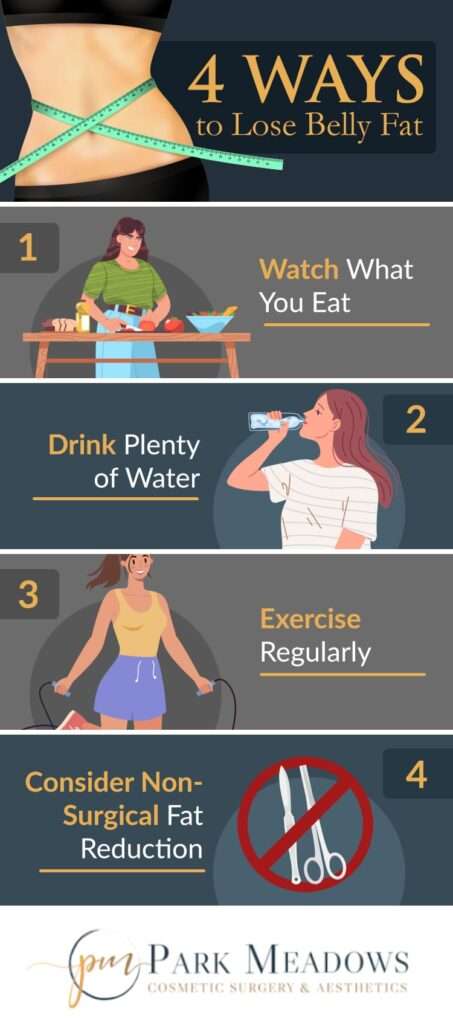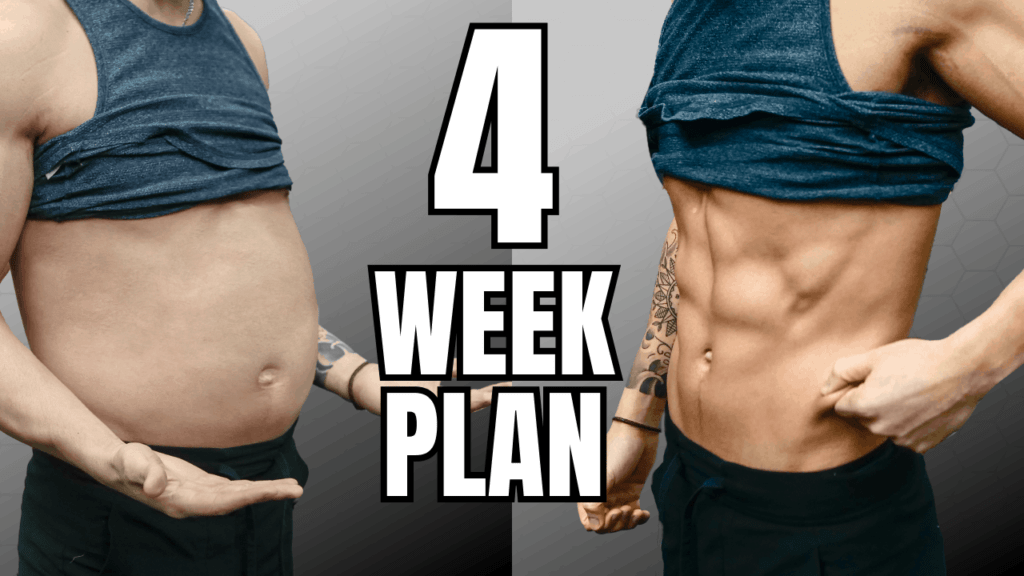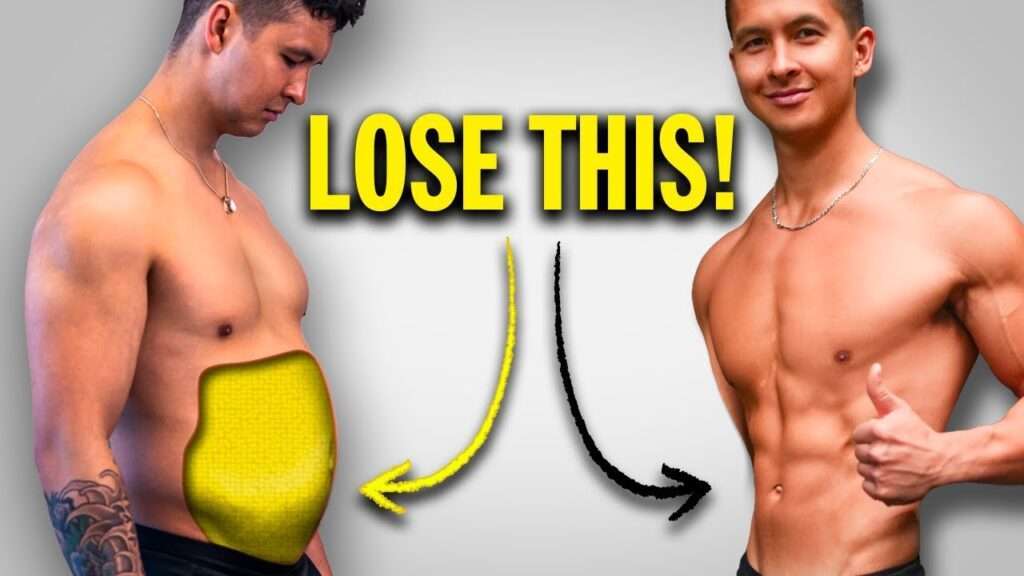Hello there! Are you looking for ways to reduce your belly fat specifically? Well, you’re in the right place! In this article, you’ll discover effective strategies that target belly fat and help you get closer to your fitness goals. We’ll explore various aspects such as dietary changes, exercises, and lifestyle adjustments that can make a significant difference. So, get ready to learn some valuable tips and tricks to say goodbye to belly fat once and for all!

Understanding Belly Fat
What is belly fat?
Belly fat, also known as visceral fat, is the fat that accumulates around your midsection. Unlike subcutaneous fat, which lies just under the skin, belly fat surrounds your internal organs. This type of fat can increase the risk of various health problems and is often associated with an unhealthy lifestyle.
Types of belly fat
There are two main types of belly fat: subcutaneous fat and visceral fat. Subcutaneous fat is the layer of fat that you can pinch and is located just beneath the skin. It is not as harmful as visceral fat but can still contribute to a larger waistline. Visceral fat, on the other hand, lies deep within the abdominal cavity and surrounds the organs. This type of fat is more dangerous as it can affect the proper functioning of your organs and increase the risk of diseases.
Causes of Belly Fat
Unhealthy diet
One of the primary causes of belly fat is an unhealthy diet. Consuming excess calories, especially from sugary and processed foods, can lead to weight gain and fat accumulation around the abdomen. Diets high in refined carbohydrates and low in fiber also contribute to belly fat.
Lack of physical activity
A sedentary lifestyle and lack of physical activity can promote the development of belly fat. Regular exercise helps to burn calories and build muscle, both of which are important for reducing belly fat. A lack of physical activity slows down metabolism, making it easier for fat to accumulate around the midsection.
Genetics
Genetics play a role in determining where your body tends to store fat. Some people may have a genetic predisposition to accumulate more fat in the abdominal area. While you can’t change your genetics, you can still take steps to reduce belly fat through a healthy lifestyle.
Stress and hormonal imbalances
Stress and hormonal imbalances can also contribute to belly fat. When you are under chronic stress, your body releases cortisol, a hormone that promotes the storage of fat, particularly in the abdominal area. Hormonal imbalances, such as insulin resistance and polycystic ovary syndrome (PCOS), can also lead to increased belly fat.

Health Risks Associated with Belly Fat
Type 2 diabetes
Excess belly fat is strongly associated with an increased risk of developing type 2 diabetes. Visceral fat releases fatty acids and hormones that interfere with insulin function and lead to insulin resistance, a key factor in the development of diabetes.
Heart disease
Belly fat has been linked to an increased risk of heart disease. The visceral fat that surrounds your organs releases inflammatory substances and increases the production of LDL cholesterol, also known as “bad” cholesterol. This combination can contribute to the development of atherosclerosis and eventually lead to heart disease.
High blood pressure
Carrying excess weight around your midsection can raise your blood pressure. The additional fat tissue puts extra strain on your blood vessels, leading to hypertension. High blood pressure is a significant risk factor for heart disease and stroke.
Sleep apnea
Obesity, including belly fat, is a common risk factor for sleep apnea. Sleep apnea is a sleep disorder characterized by pauses in breathing or shallow breaths during sleep. Excess fat around the neck and abdomen can obstruct the airways and contribute to the development of sleep apnea.
Dietary Strategies to Reduce Belly Fat
High-fiber foods
Including more high-fiber foods in your diet can help reduce belly fat. Fiber-rich foods such as vegetables, fruits, whole grains, and legumes help keep you feeling full and satisfied, preventing overeating and weight gain. They also aid in digestion and promote a healthy gut microbiome.
Lean protein sources
Eating lean sources of protein, such as chicken, fish, tofu, and legumes, can aid in belly fat reduction. Protein is essential for building and maintaining muscle, which helps to increase your metabolism and burn more calories. Additionally, protein helps to keep you feeling full, reducing the chances of overeating.
Healthy fats
Contrary to popular belief, not all fats are bad for you. Including healthy fats, such as avocados, nuts, seeds, and olive oil, in your diet can actually help reduce belly fat. Healthy fats provide essential fatty acids, promote satiety, and support overall health.
Reduced sugar intake
One of the most important dietary strategies for reducing belly fat is to limit your intake of added sugars. Foods high in added sugars, such as soda, candy, baked goods, and sugary cereals, contribute to weight gain and increased belly fat. Opt for natural sweeteners like honey or consume fruits for a healthier alternative.

Exercise and Physical Activity for Belly Fat Reduction
Aerobic exercises
Aerobic exercises, also known as cardio, are effective in burning calories and reducing belly fat. Engaging in activities such as brisk walking, running, cycling, swimming, or dancing can help increase your heart rate and promote fat burning. Aim for at least 150 minutes of moderate-intensity aerobic exercise per week.
Strength training
Incorporating strength training into your fitness routine is essential for building muscle and boosting your metabolism. Including exercises such as weightlifting, resistance bands, or bodyweight exercises can help tone your body and reduce belly fat. Aim for strength training sessions at least two to three times per week.
Interval training
Interval training involves alternating between high-intensity exercises and periods of rest. This type of exercise is effective in burning belly fat and can be done in various forms, such as interval running, cycling, or circuit training. Incorporate interval training into your workouts for maximum fat-burning benefits.
Core exercises
While core exercises alone won’t spot-reduce belly fat, they can strengthen and tone your abdominal muscles. Including exercises such as planks, crunches, and Russian twists can help improve your core strength and give your midsection a more sculpted appearance.
Lifestyle Changes for Belly Fat Reduction
Get enough sleep
Getting adequate sleep is crucial for maintaining a healthy weight and reducing belly fat. Lack of sleep can disrupt hormones that regulate appetite, leading to increased cravings and overeating. Aim for seven to nine hours of quality sleep per night to support your weight loss efforts.
Manage stress levels
Chronic stress can contribute to belly fat accumulation. Find healthy ways to manage stress, such as practicing yoga, meditation, deep breathing exercises, or engaging in hobbies you enjoy. Taking time for self-care can help reduce stress levels and support belly fat reduction.
Limit alcohol consumption
Alcohol is high in calories and can contribute to weight gain, including belly fat. Limit your alcohol intake or opt for healthier alternatives such as sparkling water with a splash of fruit juice. Moderation is key when it comes to alcohol consumption.

Importance of Hydration for Belly Fat Reduction
Benefits of drinking water
Staying hydrated is essential for overall health and can aid in belly fat reduction. Drinking water helps boost metabolism, increase satiety, and flush out toxins from the body. It also prevents water retention, which can make you feel bloated and look puffy around the midsection.
Tips for staying hydrated
To stay hydrated and support belly fat reduction, aim to drink at least eight glasses of water per day. Carry a water bottle with you at all times and sip water throughout the day. You can also incorporate hydrating foods such as watermelon, cucumber, and lettuce into your diet.
Tracking Progress and Setting Realistic Goals
Measuring waist circumference
One way to track your progress in reducing belly fat is by measuring your waist circumference. Use a tape measure to measure the circumference of your waist at the level of your belly button. Keep track of your measurements over time to see if you’re making progress.
Tracking body fat percentage
Tracking your body fat percentage can give you a more accurate measurement of your progress than simply relying on weight. Body fat percentage can be measured using various methods, such as skinfold calipers, bioelectrical impedance analysis (BIA), or DEXA scans. Consult a professional for accurate measurements.
Setting achievable targets
When setting goals for belly fat reduction, it’s important to be realistic and focus on overall health rather than just appearance. aim for gradual weight loss of 1-2 pounds per week and focus on adopting a sustainable lifestyle that includes healthy eating and regular exercise. Remember, everyone’s body is different, so progress may vary.

Seeking Professional Guidance for Belly Fat Reduction
Consulting a registered dietitian
If you’re struggling to reduce belly fat, seeking the help of a registered dietitian can be beneficial. They can provide personalized nutrition advice, help you create a meal plan, and guide you in making healthy food choices that support belly fat reduction.
Working with a personal trainer
If you’re not sure how to approach exercise for belly fat reduction, working with a personal trainer can provide valuable guidance. They can create a workout plan tailored to your needs, ensure proper form and technique, and motivate you to stay consistent with your fitness routine.
Seeking medical advice
If you’ve been unsuccessful in reducing belly fat despite your efforts, it may be beneficial to seek medical advice. Certain medical conditions and hormonal imbalances can contribute to stubborn belly fat. A healthcare professional can evaluate your overall health and provide further recommendations or interventions if needed.
Conclusion
Reducing belly fat specifically requires a combination of healthy dietary strategies, regular exercise, lifestyle changes, and proper hydration. By incorporating a balanced diet, engaging in physical activity, managing stress levels, and seeking professional guidance when needed, you can take important steps towards reducing belly fat and improving your overall health. Remember, consistency and patience are key, so stay committed to your goals and embrace a healthier lifestyle.
